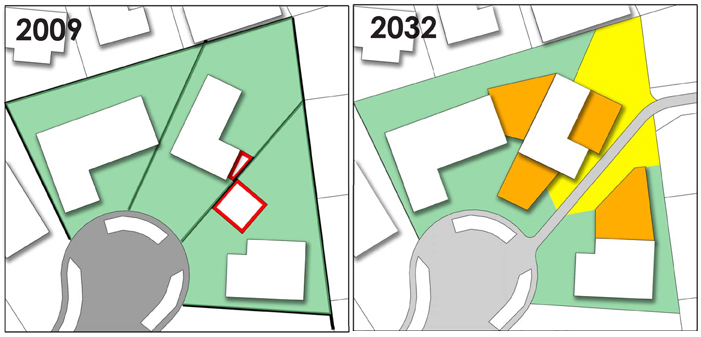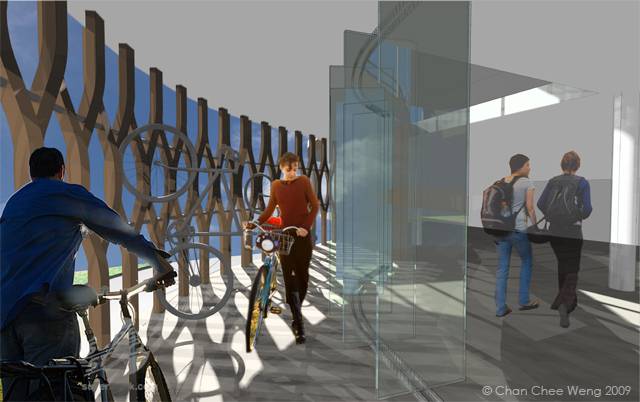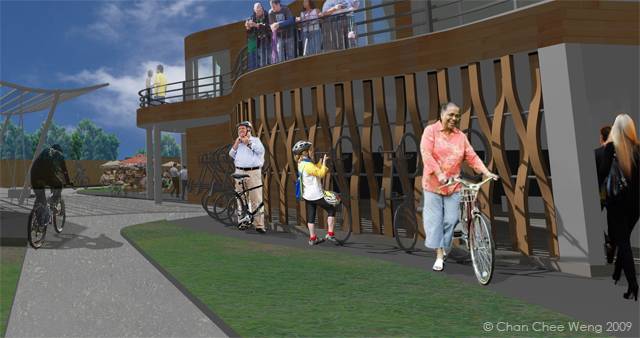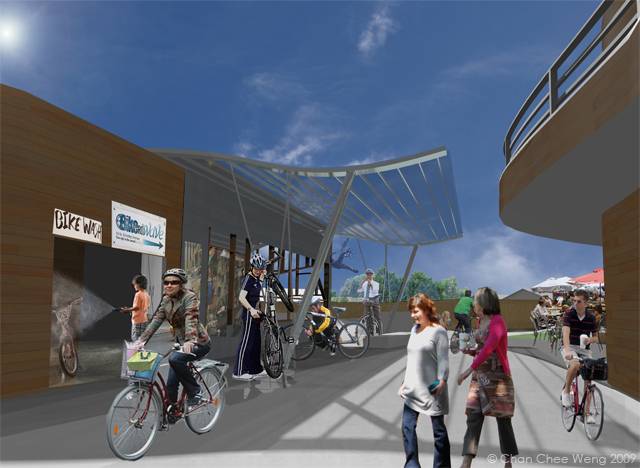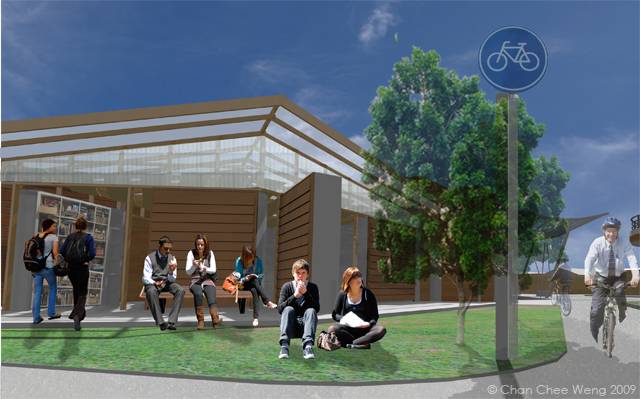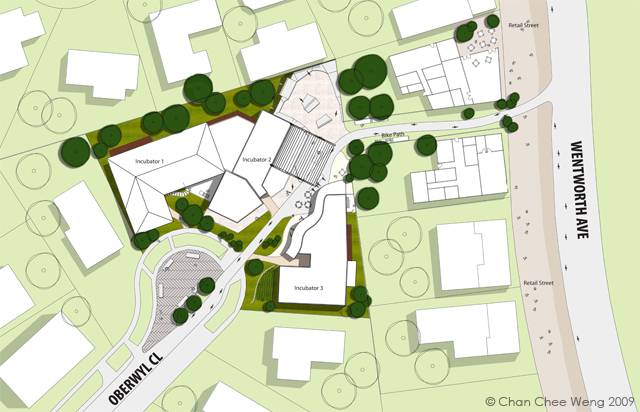Incubators Rowville 2032
Opening suburbs, increasing circulation, redefining urban villages.
Shortening Distances
In Rowville 2032, the car has become obsolete thanks to rising fuel prices and an awareness for environmental sustainability. The past few decades, car usage has been made uncomfortable by restricting main roads to one-way traffic and stealing lanes to provide bike paths. Eventually redundant roads and intersections have been turned into structures or ‘pain’ elements which obstruct the use of cars completely. On the positive side, however, bicycles have become the main mode of transportation as cul de sacs have been opened up to provide convenient bike paths to shorten distances between points. Cul de sacs, no longer dead ends, have been turned into a community open space. Home businesses and retail are dispersed throughout the suburb which reduces the need for long distance travel.
A Dispersed Network
Reduced to a short distance travel system, home businesses and retail are at every corner and turn. Most of them are retrofitted, though some have been rebuilt completely. The retail units tend to concentrate around existing social infrastuctures to take advantage of the higher level of pedestrian traffic, ie. schools, public parks or the Rowville Train Station. These retail streets have become the new place for interaction, and the unpredictability of the business nature and location encourages the people to explore the streets of Rowville; people meet when they are dropping off their kids, before getting on the train, or while they are shopping.
Designer
Chan Chee Weng
Domain
Architecture
Studio
Studio Leader
Simon Wollan & Ammon Allan Beyerle
